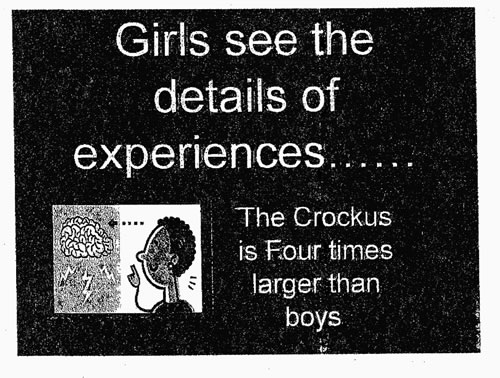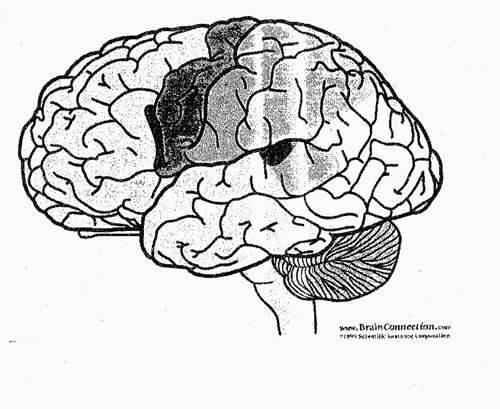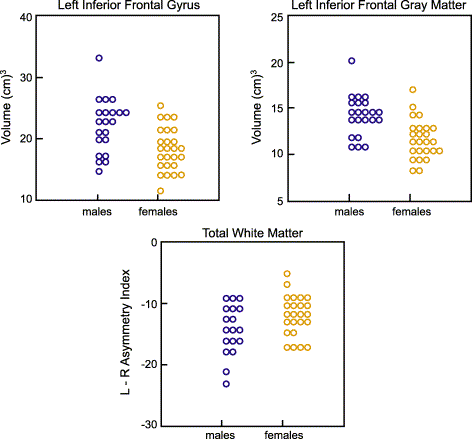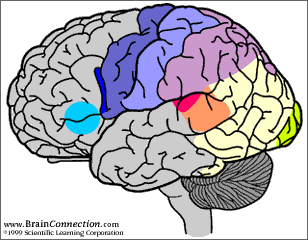September 18, 2007
High Crockalorum
Yesterday, Heidi W. sent in a note about the presentation that Dan Hodgins made to an Early Childhood Education group in her large urban school district ("How big is your crockus?", 9/17/2007). Much of his talk was the standard stuff of current pop neuro-indoctrinology ("science has revealed that boys' brains are made of snips and snails and puppy-dog tails"), but one bit stuck out: the idea that a brain structure called "the crockus" is four times larger in girls than in boys.
Now, I'm used to seeing the pop neuro-indoctrinologists misrepresenting or even inventing numbers, exaggerating differences, and generally misusing science to shore up weak arguments about social policy. But this is the first time, as far as I know, that someone has actually made up a whole new brain area.
In fact, the idea that someone would actually fabricate "the crockus" as a neuro-anatomical neologism was so unexpected, so far beyond the boundaries of my imagination, that I misinterpreted Heidi's note. I thought "crockus" was her attempt to render some odd pronunciation that Hodgins used in his presentation.
But she quickly corrected me, and sent in a scan of (parts) of his handout, which was the take-away paper form of his PowerPoint slides. Here's the crucial slide:

His next slide tells us that (because of their smaller Crockus) "boys see the whole but not the details".

He illustrated the role of Crockus by showing the audience a lateral view of the brain -- Heidi sent a scan of the handout version:

And she did a bit more research:
The drawing of the brain is not labeled on the handout, and it wasn't labeled in Hodgins' PowerPoint presentation, but the drawing indicates that it's from BrainConnection.com and I just located it here.
Hodgins referred to the small royal blue area, which is labeled "pars opercularis" on the web site PPslide, and he said that's the size of the crockus in males, and he referred to the motor cortex (somewhat lighter shade of blue) and said that's the size of the crockus in females.
This is truly strange stuff. I feel like I'm in a magic realist novel that's slipped slightly out of editorial control.
But I have a theory. Maybe back in 2003, Prof. Hodgins was talking with some of his drinking buddies, and the conversation went something like this:
Hodgins: Those education professionals, they're so worried about sex differences and so wowed by neuroscience, you can show 'em a picture of the brain and tell 'em any crazy thing about how brain scans show boys are different from girls. And they not only believe it, they pay you. Fly you out, nice hotel, per diem, the works.
Drinking Buddy #1: OK, they're desperate and they're credulous, but you got to make it plausible.
Hodgins: Nah, you take a random brain picture and any stupid made-up words and numbers, they'll swallow it like ice cream.
Drinking Buddy #2: Come on. You got to do a little reading, anyhow, you can't just tell them, oh, the "crockus" is four times bigger in girls and that's how come they're like better with details while us guys deal with the big picture.
Hodgins: Sure I could, absolutely.
Drinking Buddy #1: $500 says you're full of it.
Hodgins: You're on.
This theory is surely false. Maybe Prof. Hodgins just mis-remembered pars opercularis as crockus. Or ....
No, I give up. I'll just spoil the joke, in my usual heavy-handed way, by citing what's actually known about sex differences among school-age children in the brain region that Hodgins seems to have been talking about.
Let's take a look at R.E. Blanton et al., "Gender differences in the left inferior frontal gyrus", Neuroimage, 22(2):626-636, 2004.
This study examined frontal lobe subregions in 46 normal children and adolescents (25 females, mean age: 11.08, SD: 3.07; and 21 males, mean age: 10.76, SD: 2.61) to assess the effects of age and gender on volumetric measures as well as hemispheric asymmetries.
Here's their Fig. 8 "Gender Differences"

which they explain as follows:
Total intracranial volume, total gray matter, and total white matter were significantly larger in boys compared to girls (F = 11.63, P = 0.001; F = 16.17, P < 0.001; F = 9.59, P = 0.004, respectively). In addition, total left gray matter volume was found to be significantly larger in boys (F = 7.58, P = 0.009).
After covarying for total intracranial volume, male subjects were found to have more gray matter in the left IFG (F = 9.14, P = 0.004), a trend for a significantly larger left IFG relative to girls (F = 6.38, P = 0.016), and a trend for increased asymmetry in total right white matter as compared to total left (F = 6.24, P = 0.017).
Let me point out here, again, that the distributions are heavily overlapped, and that most of the subjects are in the overlapped region. The sex differences are interesting and worth further study, but it's nuts to prescribe on the basis of such evidence that our educational systems needs to treat boys and girls as if they were completely separate species.
[Update -- Since the pars opercularis and the pars triangularis together form Broca's area, several readers have suggested that perhaps it was Hodgins who misheard "Broca's" as "Crockus". This occurred to me as well -- and also to Heidi W. -- but we were all wrong. I wrote to Dan Hodgins, asking
Someone who recently heard you speak asked if I could explain your reference to a part of the brain called the "Crockus", which is four times larger in girls than in boys, and is apparently involved in explaining differences in attention to detail.
I couldn't find any information on the web about a part of the brain by that name. Can you help?
Prof. Hodgins was kind enough to reply very quickly:
Thanks for asking....The Crockus was actually just recently named by Dr. Alfred Crockus. It is the detailed section of the brain, a part of the frontal lope. It is the detailed section of the brain. You are right, it is four times larger in females then males from birth. This part of the brain supports the Corpus Callosum (the part of the brain that connects the right and left hemisphere. The larger the crockus the more details are percieved by the two sides of the brain.
For boys, usually they only view and analyze the whole picture, not the sum of its details. Girls brains are wired to look at the details first, which then leads them to the whole picture.
Look at the work by Moir.
This deepens the mystery, I think, because I can't find any likely-looking Alfred Crockus via Google Scholar or Wikipedia or even general web search. I think that the "Moir" he's referring to is the co-author of Anne Moir and David Jessel, Brainsex, 1992. But Amazon offers its "Search Inside" feature for that work, and a search for "Crockus" in it comes up empty.
I've written back to Prof. Hodgins for more information.]
Posted by Mark Liberman at September 18, 2007 06:17 AM